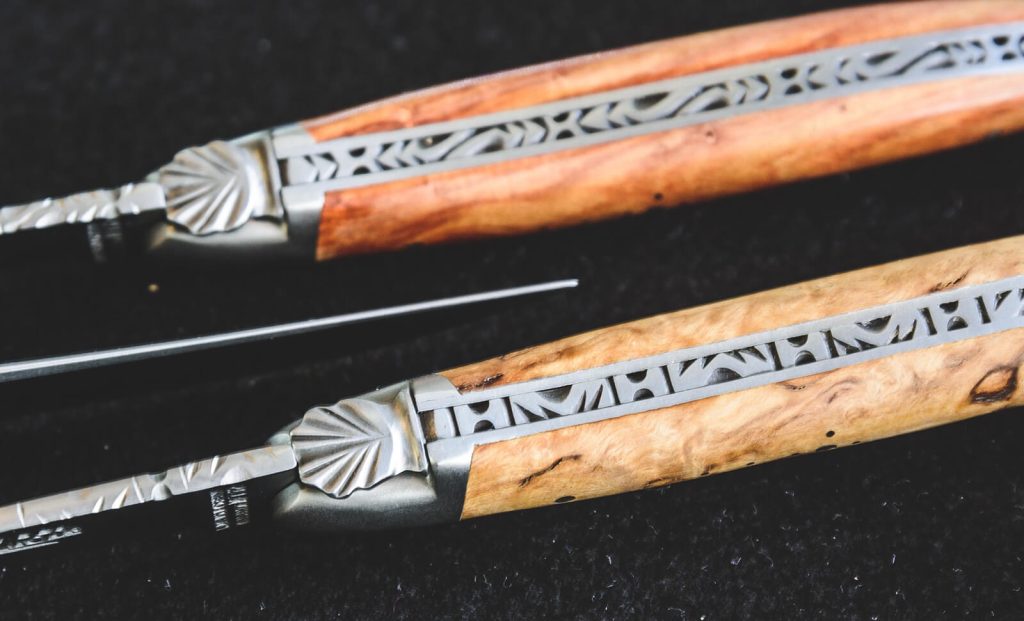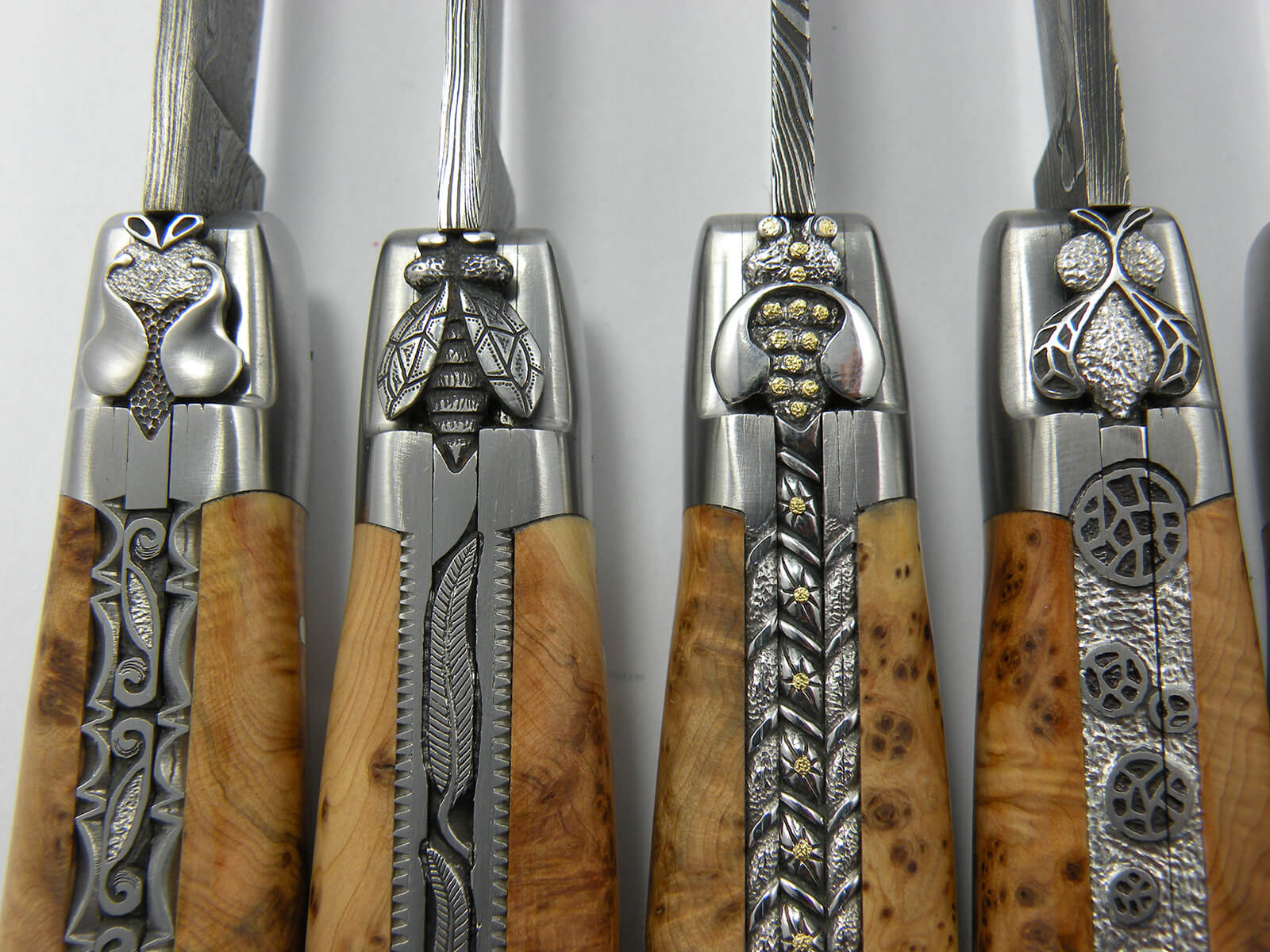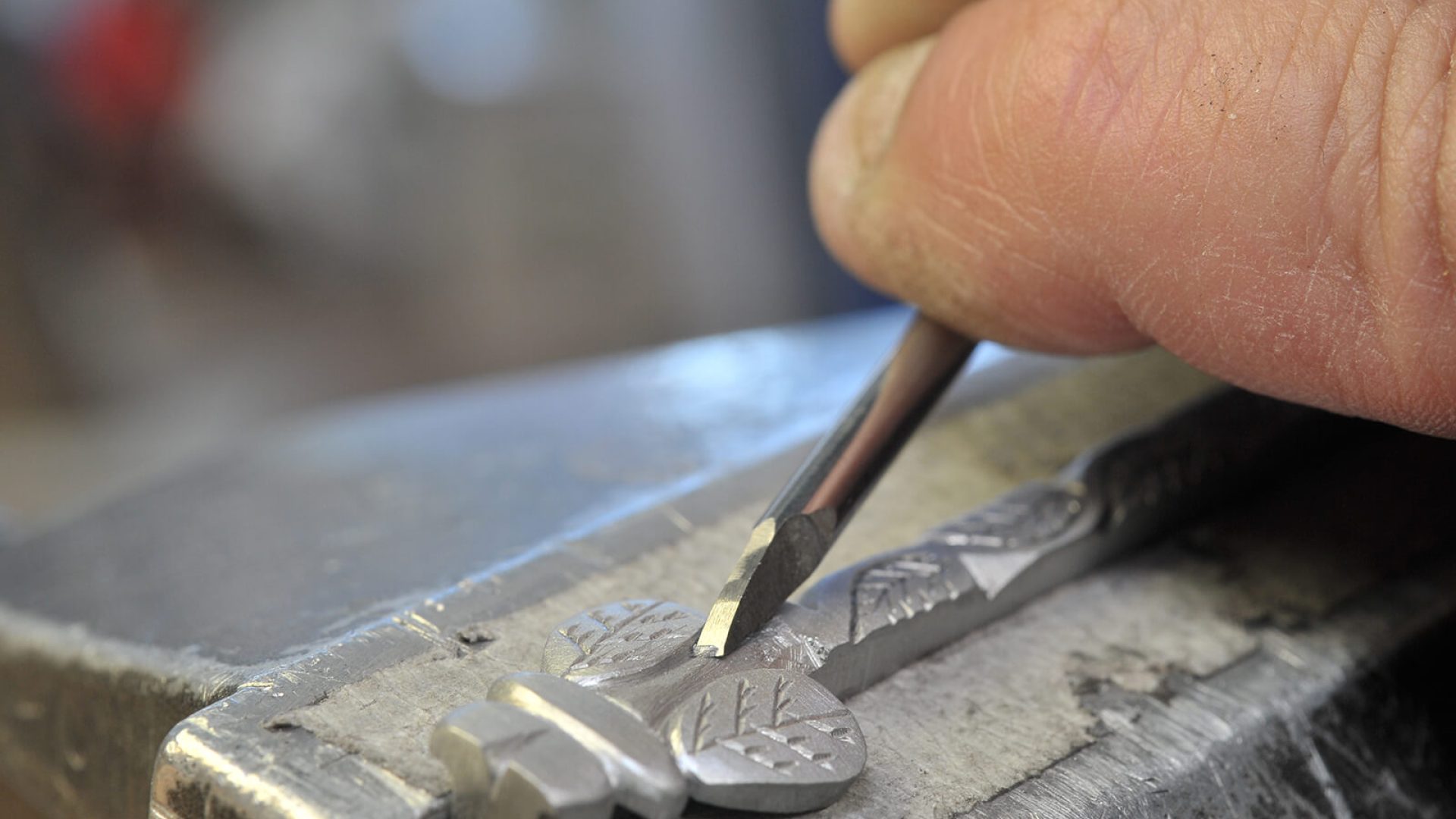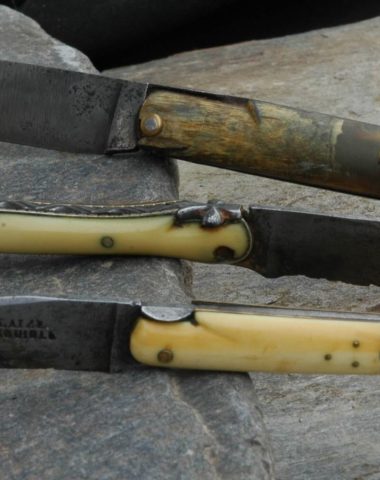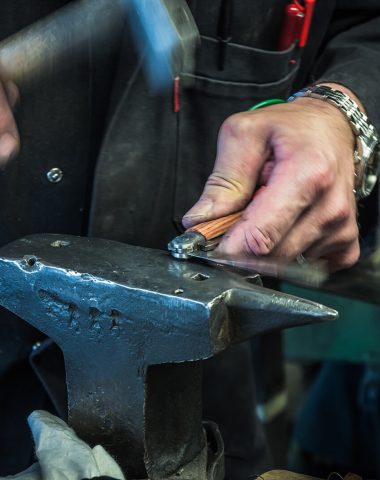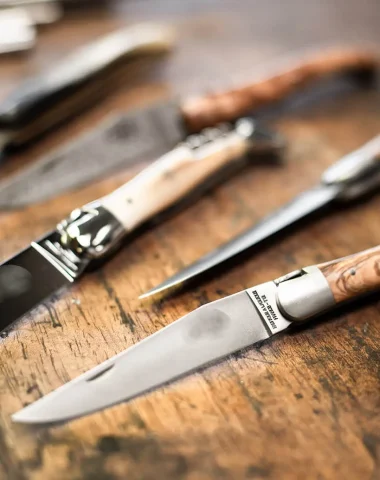We often equate the Laguiole knife withbee as an essential symbol to have on your Laguiole as a sign of guarantee. But did you know? In cutlery terminology, this part, located at the end of the spring, is called a fly.
This fly has always been the cutler's place of expression to demonstrate his art of chiseling. In turn, four-leaf clover, lily flower, the bee appeared in the years 1908-1909, well after the punch and the corkscrew.
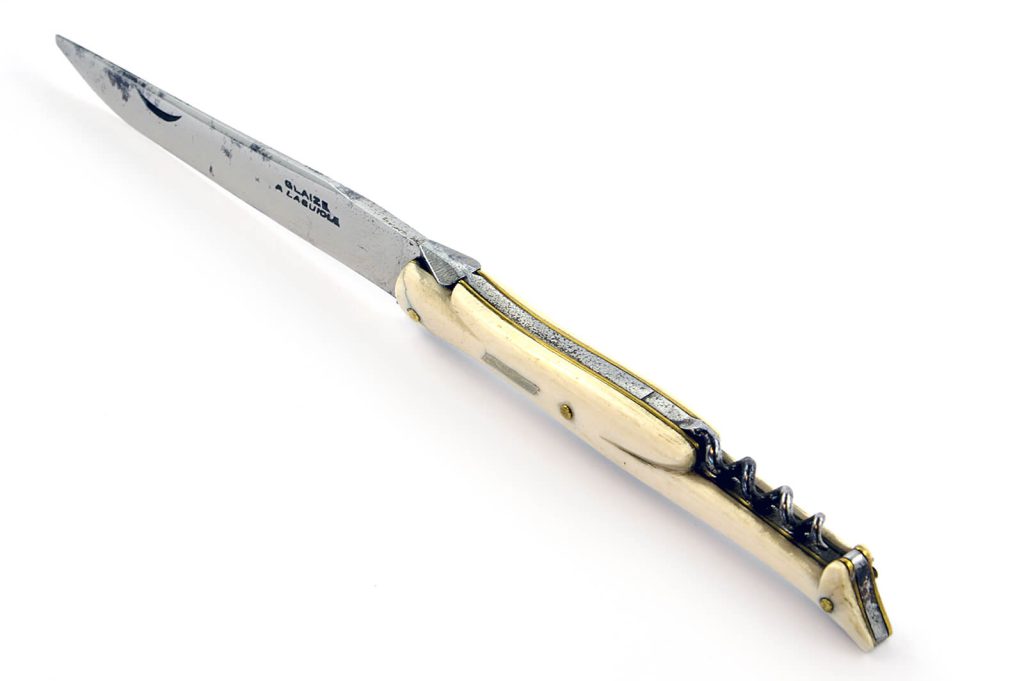
The fly is a cutler's term designating a widening reinforcing the front part of the spring, forged in pallet. It is present on all knives using a switchblade or a forced notch to lock the blade in the open position. This is the case of Laguiole, you have to force the blade to close the knife.
The fly may have different functions depending on the types of blocking: reinforcement to place the tenon of the detent, widening of the spring head for easier grip, allowing the spring to be lifted between the thumb and the index finger for certain knives with forced detents. On the Laguiole, the fly can be welded to the spring (with a purely decorative function) and also chiseled in the shape of a bee for example, so it will be in one piece.
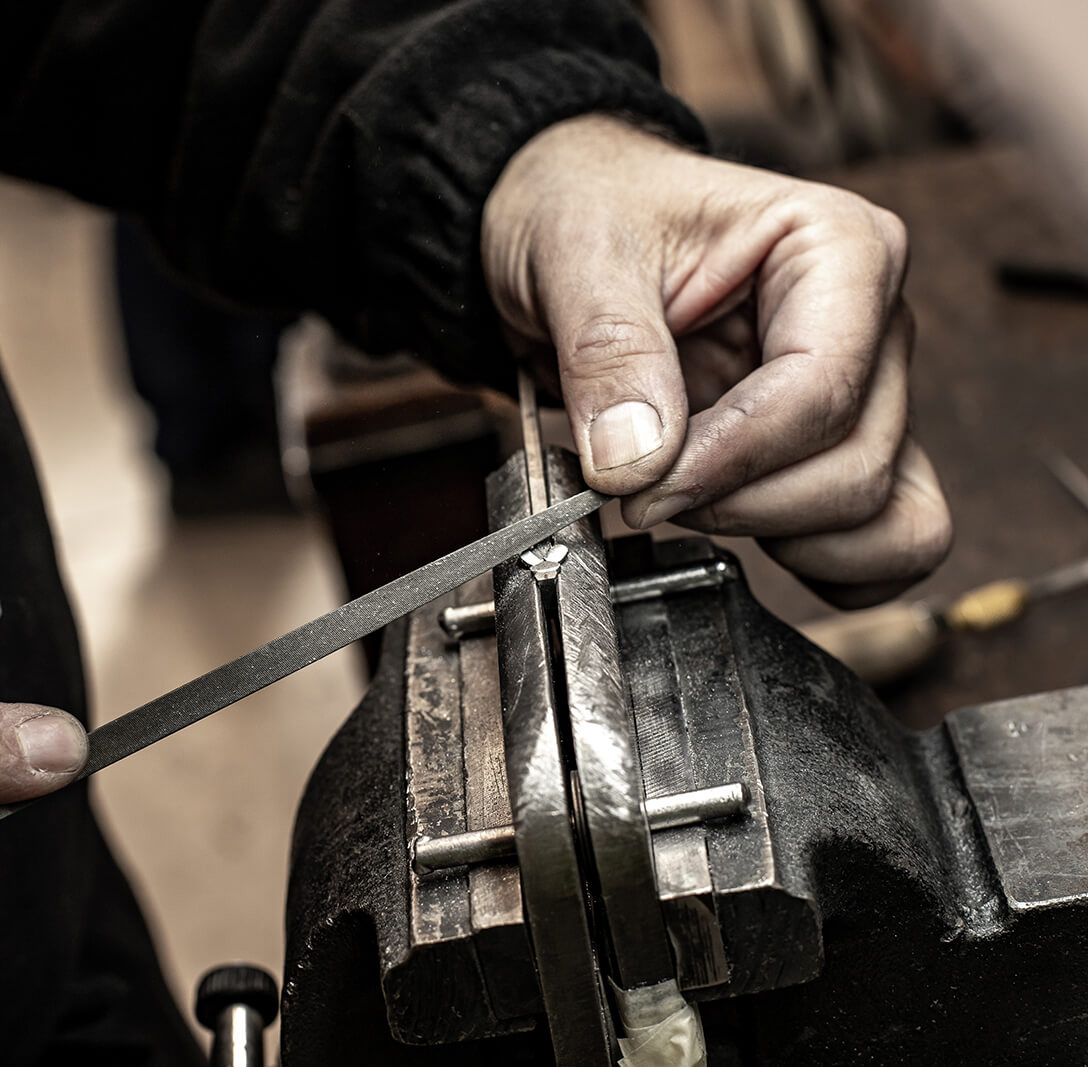
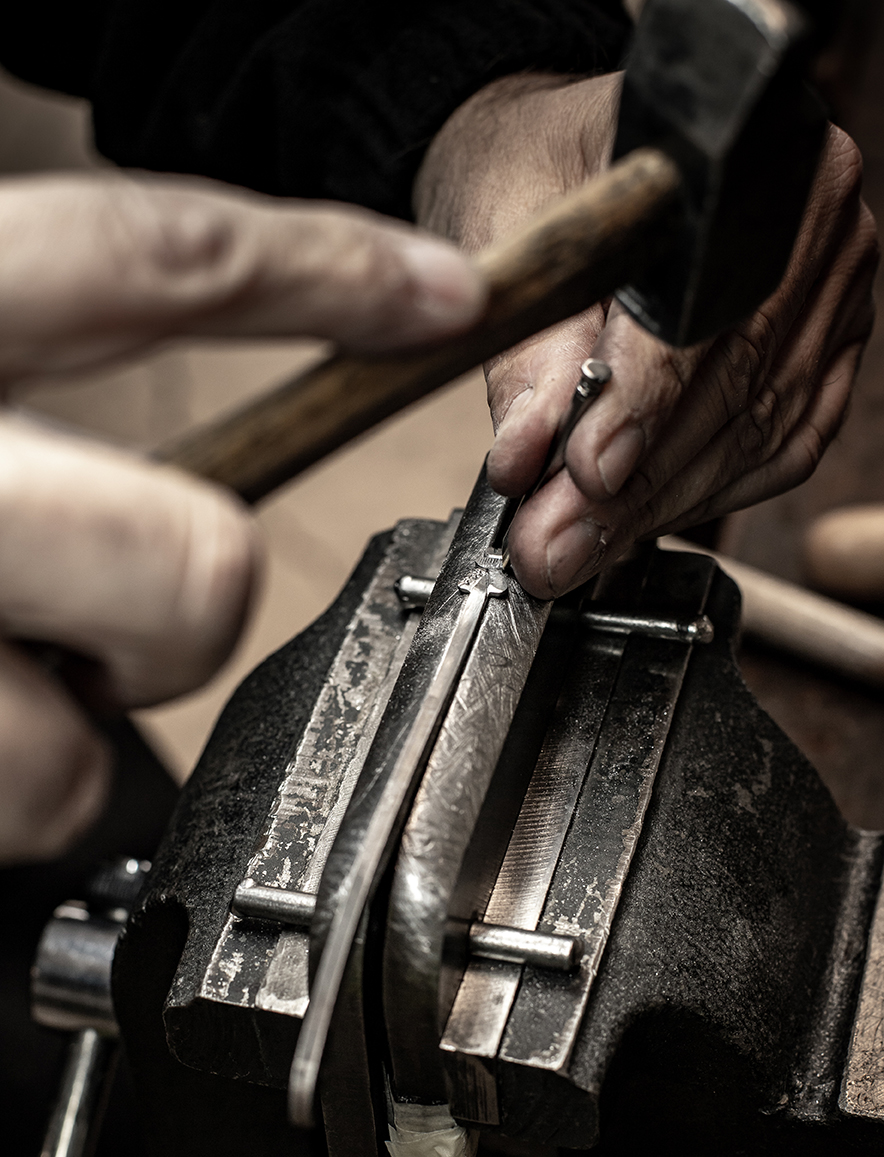
Even today, craftsmen chisel the fly often in a "bee" shape, but all patterns are possible. To meet your desires you can ask for a firefighter's helmet, a scallop shell, an animal's head, a flower or anything that will make you happy. Rest assured, with or without a bee, but especially with a fly, it will be a Laguiole.
